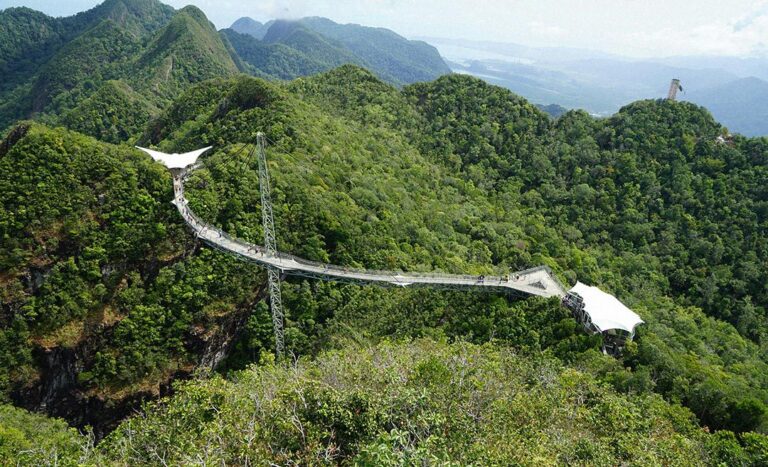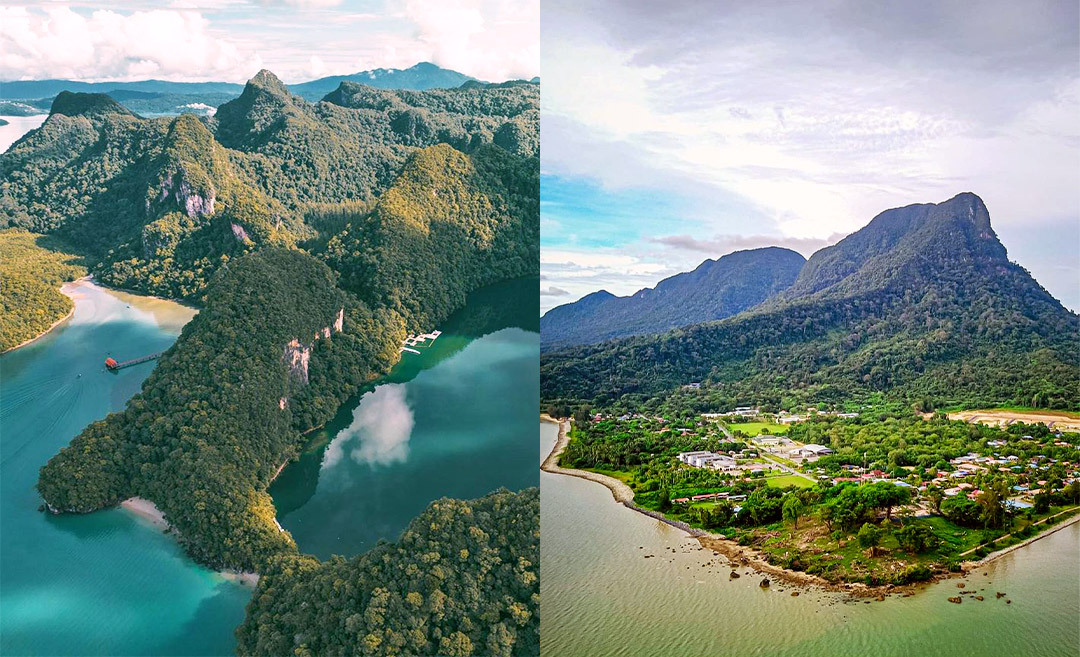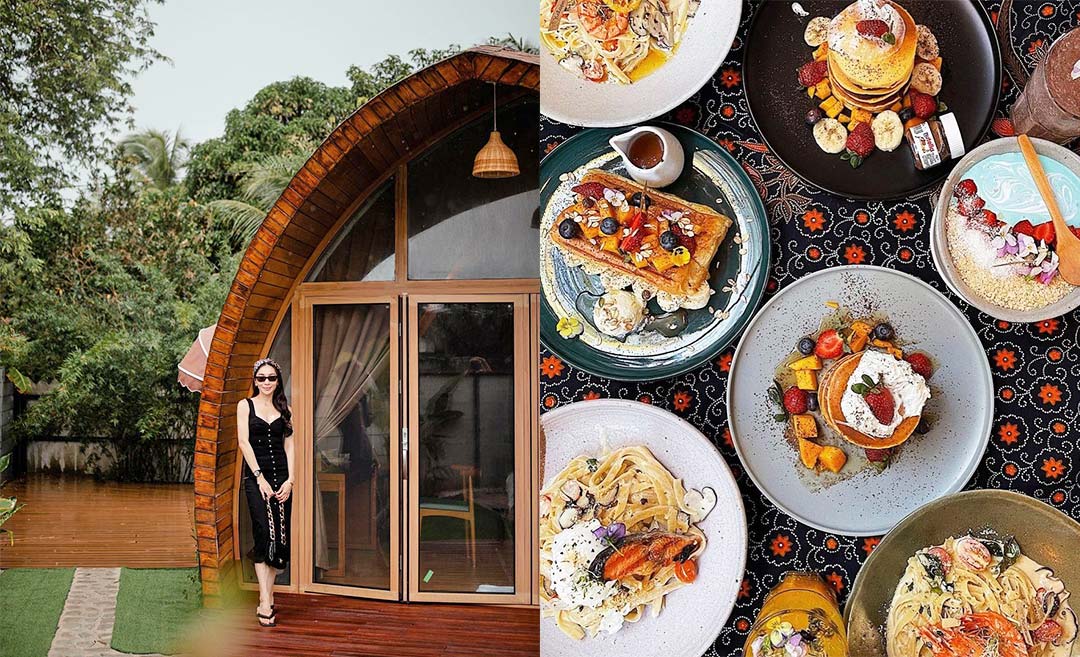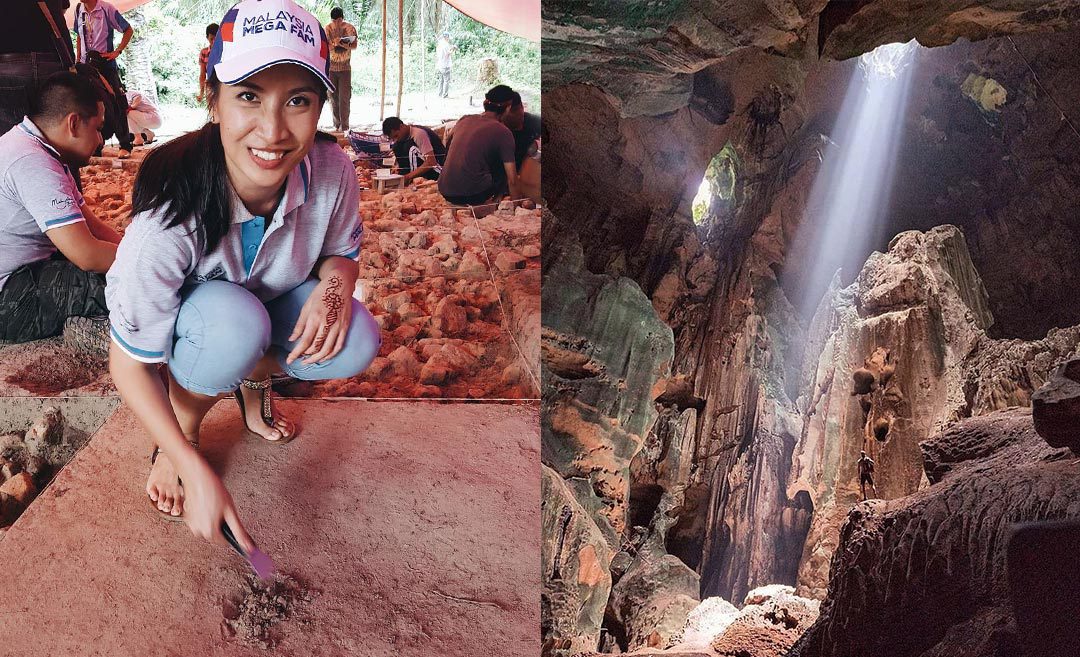Langkawi, the Jewel of Kedah, is a tropical paradise famed for its stunning natural wonders, heritage, and history. The island is also inseparable from its many myths and legends. In fact, many of Langkawi’s geological features, historical landmarks, and places of interest are connected to an enticing mythological tale.
Here are six places on the Isle of Legends to explore for a unique glimpse back in time, from the island’s agricultural roots to a primordial past when giants and fairies roamed the land.
Mount Machinchang & Mount Raya
Once upon a time, two giants, Mat Chinchang and Mat Raya, got into a brawl at the wedding banquet of their children, where they threw various things at each other. From the commotion, several famous spots around Langkawi came to be.
A toppled pot of gravy became the town of Kuah (gravy), a broken pot became the village of Belanga Pecah (broken cooking pot), and a pot of hot water fell to become the village of Ayer Hangat (hot water), where the famous hot springs are. Meanwhile, a wedding ring fell and became Tanjung Cincin (Cape of the Ring).
Mat Sawar intervened and put a stop to the fight between the in-laws, but not before a bolt of lightning struck the three giants, turning them into stone. Thus, they became Mount Machinchang and Mount Raya, with Sawar Hill wedged in between.
Designated as the Machinchang Cambrian Geoforest Park since 2007, the Machinchang mountain range is accessible by the Langkawi SkyCab, one of the longest and steepest cable-car rides in Southeast Asia. The ride will take you to the top of Mount Machinchang for a spectacular panoramic view and a walk on the SkyBridge.
You can also drive to the top of Mount Raya on a scenic winding road to escape the tropical heat and see the entire island from a watch tower—this is Langkawi’s highest peak.
Telaga Tujuh Waterfall (Seven Wells Waterfall)
Located within the Machinchang Cambrian Geoforest Park is Langkawi’s most beautiful waterfall. As its name implies, Telaga Tujuh actually has seven waterfalls connected by natural pools where the water cascades from one down to the other.
Folklore has it that the waterfall used to be a favourite bathing place for seven fairies under the moonlight. When a prince once tried to capture the fairies, they vanished and never returned.
It takes a rather arduous hike through the tropical jungle and steep trails to get to the lower pools of this 90m waterfall, but the magnificent view and tranquil atmosphere that awaits make it worth your while. Adventurous hikers may be up for the challenge of continuing the climb up some 600 more steps to reach the upper pools.
Dayang Bunting Marble Geoforest Park
Accessible via a 10-minute boat ride from the main island, Pulau Dayang Bunting (Isle of the Pregnant Maiden) is the largest uninhabited island on the Langkawi archipelago. Deriving its name from its silhouette that resembles a reclined pregnant lady when viewed from above, its most prominent feature is Langkawi’s largest freshwater lake, Tasik Dayang Bunting (Lake of the Pregnant Maiden).
Legend tells of Mat Teja, who fell in love with the beautiful fairy, Mambang Sari. Mat Teja sought the advice of a hermit, who told him to wipe his face with mermaid tears to enable him to see the spirit world and gaze upon his beloved again.
Upon doing so, Mambang Sari could see him too, and it was love at first sight. They were happily married in no time and were blessed with a baby boy. Alas, the child died seven days later, and Mambang Sari laid the infant’s body to rest in the deep waters of the lake. Since then, the lake’s water has been believed to have magical powers that heal infertile women.
Whether the legend is true or not, Tasik Dayang Bunting is a great spot for swimming and paddleboat rides.
Kota Mahsuri
The legend of Mahsuri is perhaps the best-known tale associated with Langkawi. Mahsuri was a maiden of unrivalled beauty who lived between 1720 and 1800. The story goes that when her husband, Wan Darus, left to fight against the invading Siam army, she befriended a wandering minstrel named Deraman. The village chief’s wife, Wan Mahora, who was always jealous of Mahsuri’s beauty, accused Mahsuri of adultery.
Despite her pleas of innocence, Mahsuri was tied to a tree and sentenced to death, but no weapons could harm her. Resigned to her fate, she revealed that she could only be killed with her father’s ceremonial keris. When stabbed, white blood flowed from her wound, signifying her innocence. With her dying breath, Mahsuri uttered a curse that Langkawi should not prosper for seven generations.
Langkawi experienced extensive tribulations following Mahsuri’s death, from the Siamese invasion to a series of natural disasters that hampered the economy. It was not until around the end of the 20th century that things began to take a turn for the better on the island, with Langkawi becoming a tourist destination and receiving duty-free status in 1987, a period that coincided with the birth of Mahsuri’s seventh-generation descendant, Wan Aishah.
The life and times of Mahsuri are enshrined in a complex that includes her tomb, a well with purported magical water used by Mahsuri to stay radiant, reconstructed traditional Malay houses, and a museum that houses her genealogical records and personal belongings, including the keris that killed her.
Padang Beras Terbakar (Field of Burnt Rice)
Not long after Mahsuri laid a curse on Langkawi, the Siamese army invaded the island in 1821. To prevent the food supply from falling into enemy hands, the army chieftain ordered the villagers to gather all their harvest at a house compound in Kampung Raja, pile it in a hole a few metres below ground, and burn it.
Unfortunately, it was all in vain as the Siamese army succeeded at seizing Langkawi and establishing a strong foothold on the island despite the main food supply being burnt to the ground.
The site of the burnt rice and the house compound is now one of Langkawi’s preserved historic sites open to tourists. It is said that traces of the burnt rice would emerge to the surface every time it rained heavily.
More than just fascinating tales to embellish history, the legends and myths of Langkawi are a form of living heritage that allows travellers to better understand the island’s allure, thus enriching their experience.



